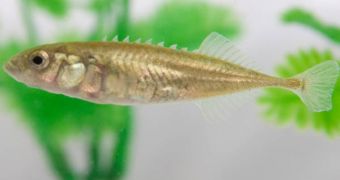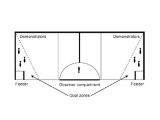A new scientific study, conducted by researchers at the St Andrews and Durham universities, shows that some fish species may have an innate ability to learn that is similar, pattern-wise, to that humans have. According to the joint team, the common nine-spined stickleback could be the first fish discovered to employ similar social learning strategies as we do. The fish can be found anywhere in Europe, and it has amazed researchers by exhibiting types of behavior never before thought possible in animals that are regularly considered of lower intellect.
The team says that the stickleback is able to compare its own experiences with those of other individuals, which eventually leads to it finding better food supplies. Essentially, members of this species are able to compare the amount of food they get from a certain patch of sea, and to decide which of the visited area holds the most food for the entire group. The experts share that this strategy, known among specialists as “hill-climbing,” has not yet been found in other animals.
Most likely, the research group believes, the fish developed this amazing skill as a response to the dangerous conditions they live in. Because of their size and complexity, they are easy targets for predators, which means that they cannot venture in the open waters to look for food-rich patches of sea on their own. As a result, they have to rely on the finds of others, which have been lucky enough to return from expeditions. They add that cognitive mechanisms underlying cumulative cultural evolution may be present in animals to a much larger extent than first believed.
“Small fish may have small brains but they still have some surprising cognitive abilities. ‘Hill-climbing’ strategies are widely seen in human society whereby advances in technology are down to people choosing the best technique through social learning and improving on it, resulting in cumulative culture. But our results suggest brain size isn’t everything when it comes to the capacity for social learning,” Research Council UK Fellow Dr. Jeremy Kendal, also an expert at the Durham University Anthropology Department, explains.
Moreover, Kendal is the lead author of a new study detailing the finds, which appeared in the latest issue of the scientific journal Behavioral Ecology. “Lots of animals observe more experienced peers and that way gain foraging skills, develop food preferences, and learn how to evade predators. But it is not always a recipe for success to simply copy someone. Animals are often better off being selective about when and who they copy,” Kendal adds.
“These fish are obviously not at all closely related to humans, yet they have this human ability to only copy when the pay off is better than their own. You might expect this ability in animals who are closely related to humans. In the case of the nine-spined stickleback, they have most likely adapted to their local ecology,” he further pinpoints.
“Nine-spined sticklebacks may be the geniuses of the fish world. It’s remarkable that a form of learning found to be optimal in humans is exactly what these fish do,” Professor Kevin Laland from St Andrews University School of Biology, also a co-author of the new study, concludes.

 14 DAY TRIAL //
14 DAY TRIAL // 
